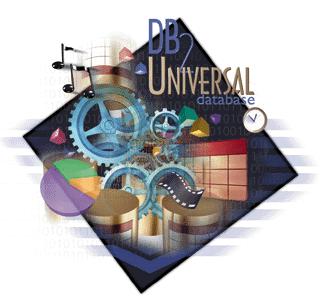3
2012
IBM DB2 Database
DB2 or database 2 is basically related to the relational database management system (RDBMS), which is part of the databases created by the IBM group. DB2 works by developing an access to a wide variety of databases or providing an open database environment for several computing platforms. In short, the DB2 database can make a significant change in the database management system. The DB2 database can create a single-user application and transform it to a multi-user system. Moreover, the DB2 database can be run using the SQL and it also include technical and management tools. With the use of the SQL, users can retrieve data from one database to the other at the same time.
History of the IBM DB2 Database
The IBM DB2 database runs a long history. It has been considered as one of the first databases ever developed that uses the SQL (which was also developed by IBM). DB2 was first used as part of IBM’s MVS mainframe platform in 1983. But DB2 has its roots back in the early seventies. The DB2 was developed by Dr. Codd. In 1970, Dr. Codd has established the theory on data manipulation. He later on devised a model that would perfectly work for relational databases. He called this model, “Alpha”. The theory of Codd was not recognized by the IBM group and thus leaves the revisions to a set of programmers who happen to be violating some of the rules governing Codd’s model. The output was called Structured English Query Language or SEQUEL. When IBM’s first relational database model was released, they changed the name of the language to SQL.

For many years, IBM DB2 database has been commercialized and distributed to other database developing companies. In order to avoid paying unnecessary database features, IBM created different editions of the DB2.
All about IBM DB2 Database and Its Features
IBM DB2 database works in two ways. You can either use a command line or a GUI. A command line requires ample knowledge of the product but keep in mind that the product is automated as well as scripted. GUI, on the other hand, is a product of Java, which is a multi-platform for beginners. DB2 also uses the SQL and the XQuery. SQL or the Structured Query Language is the primary language used by the IBM DB2 database. If you’re going to use the XQuery, you’ll need to understand how the store XML data. You should store the XML data as XML and not as CLOB data to have a faster access of the XQuery.
IBM DB2 is written in C, C++, Java, Ruby, FORTRAN and other programming languages. Aside from these features, IBM DB2 database also has a very important feature and that is error processing. Primarily, the SQL communications area is included in the DB2 program, which works by returning the error of the application programs after the execution of SQL statements. If you’re going to use the DB2 database, you must remember the DB2 return codes, which include:
Zero “0” means a successful execution.
A positive number, “+50”, means that the execution was successful and there are one or more warnings.
A negative number, “-50”, means that the execution was unsuccessful and there are significant errors.
Further readings
Advertisements
Recent Posts
- What is a Disaster Recovery Data Center
- What is a Relational Database?
- What is a Flat File Database?
- What is a DSN or Database Source Name?
- What is a Disaster Recovery Plan?
- What is an Open Source Database?
- What is Disaster Recovery?
- What is a Database Cluster?
- What are Database Servers?
- What are Database Forms?

 An article by
An article by 




